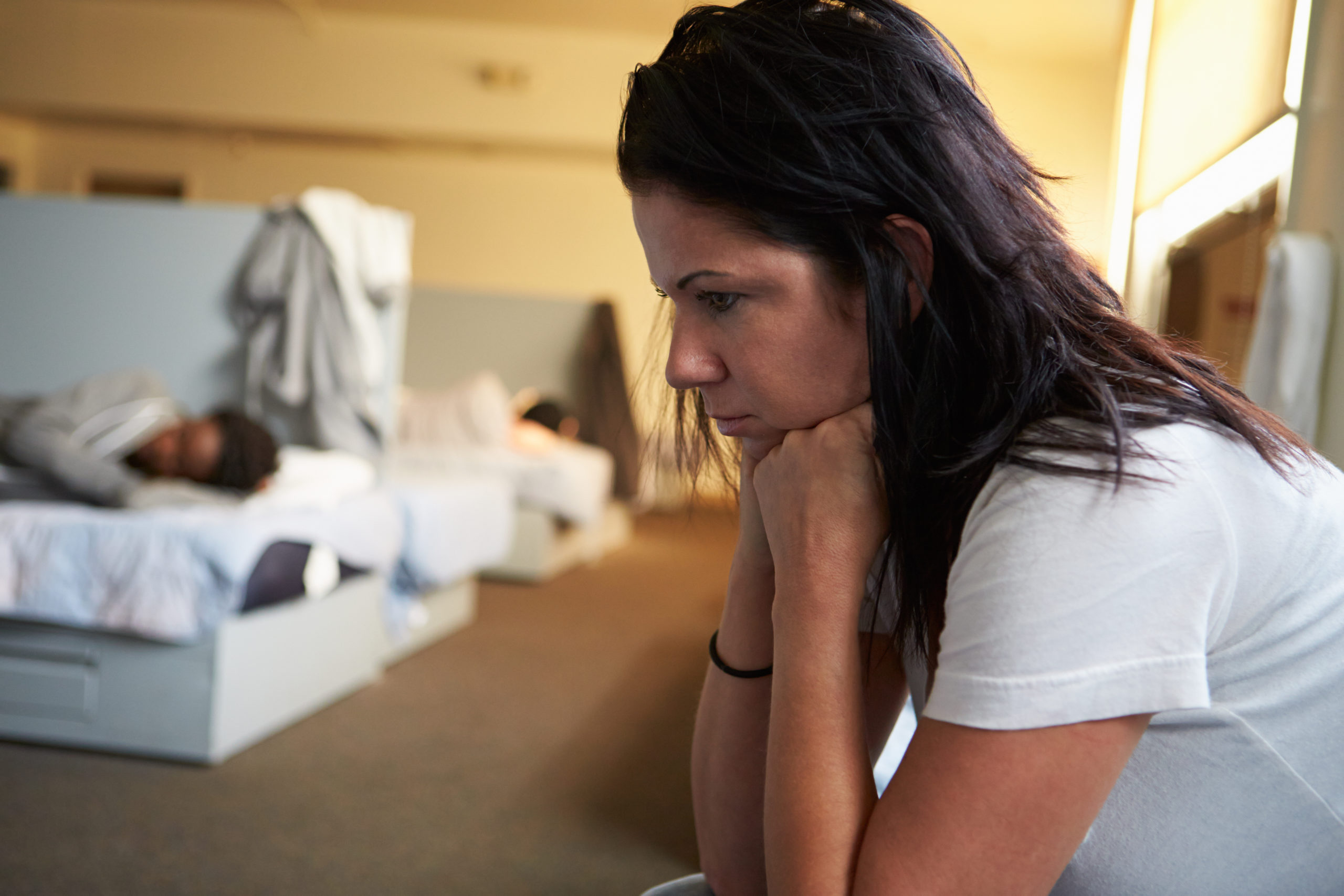By Liz Hay, SWHR Communications Intern
For almost a year, people around the country have been encouraged to stay home, practice social distancing, wear masks, and frequently wash their hands to avoid contracting COVID-19. But following these recommendations simply is not possible for many women experiencing homelessness.
Housing is inextricably linked to health. Women experiencing homelessness are an at-risk population for whom the COVID-19 pandemic is exacerbating existing health and economic challenges. Unfortunately, there is limited data on this population, making it challenging to respond appropriately to their needs.
More than half a million people in the U.S. are experiencing homelessness and about 39% of those are women and girls. Most minority groups experience homelessness at far greater rates than white people, and people of color are also facing a disproportionate impact from the COVID-19 pandemic. Many homeless individuals are at increased risk of severe COVID-19 due to older age or underlying medical conditions, and they often lack of access to quality health care.
Despite initial grim predictions of significant COVID-19 spread among people experiencing homelessness, reports suggest that the isolation and lack of indoor shelter experienced by this population may have stymied the spread. Outbreaks have occurred in homeless shelters though, which are often crowded, making it easier for diseases to spread despite COVID-19 safety measures. The United States Interagency Council on Homelessness estimates 12,111 COVID-19 cases and 224 deaths due to COVID-19 in 2020 among people experiencing homelessness. However, the report notes that these numbers are likely undercounts.
Surging Risk of Homelessness
An analysis early in the pandemic suggested that homelessness could increase by almost 50% in 2020. However, it has proved difficult to verify these projections in part due to the cancellation of annual counts of local homeless populations out of fear of COVID-19 transmission. The 2020 Census conducted a count of people experiencing homelessness in late September, but a report from the Center for American Progress warns that this group “may be undercounted and miscounted at higher rates than in previous decades” due to the disruptions caused by the COVID-19 pandemic. Local and national counts inform policy decisions, so missing data means policymakers are flying blind when trying address areas of need.
Women and families represent the fastest-growing portion of the homeless population, and COVID-19 has especially compounded the risk factors that disproportionately impact women, such as intimate partner violence and eviction.
Intimate partner violence remains the leading cause of homelessness for women. Experts are concerned that the pandemic has sparked a silent but drastic increase in intimate partner violence across the country. Stay-at-home orders and new stressors have contributed to a rise in domestic violence while simultaneously making it more difficult for women to safely use resources like hotlines. Women experiencing intimate partner violence often find themselves without a safe space and must choose between homelessness or staying with an abusive partner.
During the pandemic, Black women have been at particularly increased risk of homelessness due to eviction. In December, they were twice as likely to report being behind on rent than white men. To help renters during the pandemic, the Centers for Disease Control and Prevention (CDC) issued a moratorium on evictions, which was extended through the end of March by the Biden administration. But many renters are still being evicted. In periods when eviction moratoriums were lifted throughout the pandemic, there were associated increases in COVID-19 incidence and mortality in those areas.
Supporting Women Facing Homelessness
To protect women experiencing homelessness against COVID-19, they must be made a priority group for vaccination. Homeless individuals were not explicitly included in any priority grouping defined by the CDC’s Advisory Committee on Immunization Practices, although some states have amended these recommendations to include homeless populations. The CDC recently released guidance on vaccination implementation for this population, but significant barriers exist to vaccinating individual experiencing homelessness. The federal government should take steps to explicitly acknowledge the state of homelessness as a risk factor for COVID-19 and prioritize vaccination within this group.
Policy that better addresses the long-term needs of low-income women renters is critical to preventing a wave of evictions in the next year. While the current federal eviction moratorium delays rent payments, it does not cancel back rent or fees. Hispanic households, Black households, and family households headed by single women are disproportionately likely to experience rental debt and risk of eviction after the moratorium expires. The moratorium also does not protect against other actions, such as utility shut-offs, that landlords could take against indebted renters. Landlords are also not required to notify their tenants of the moratorium.
In December 2020, Congress established the Federal Emergency Rental Assistance Program, which promised $25 billion for national rent forgiveness by the end of January. However, this relief has been slow to arrive and experts say it will not come close to meeting the financial needs of renting households. The Biden administration’s proposed “American Rescue Plan” would provide $30 billion in rental assistance for households and $5 billion for states to help secure housing for people experiencing or at risk of homelessness. Congress attempted to address some of the strain of the pandemic on the homeless population through last year’s CARES Act, but that funding was also delayed for months.
Finally, Congress should also advance legislation that addresses the needs of survivors of intimate partner violence facing homelessness. Reauthorizing the Violence Against Women Act (VAWA) would provide long-term support for shelters and crisis centers for survivors and allow public housing agencies to prioritize this population.
Before the pandemic, homelessness was already at a crisis point in the U.S. Women need affordable and safe housing options to protect their health. The compounding effects of COVID-19 will continue to exacerbate the homelessness crisis for years to come if meaningful action is not taken to address the unique housing and health needs of women.
